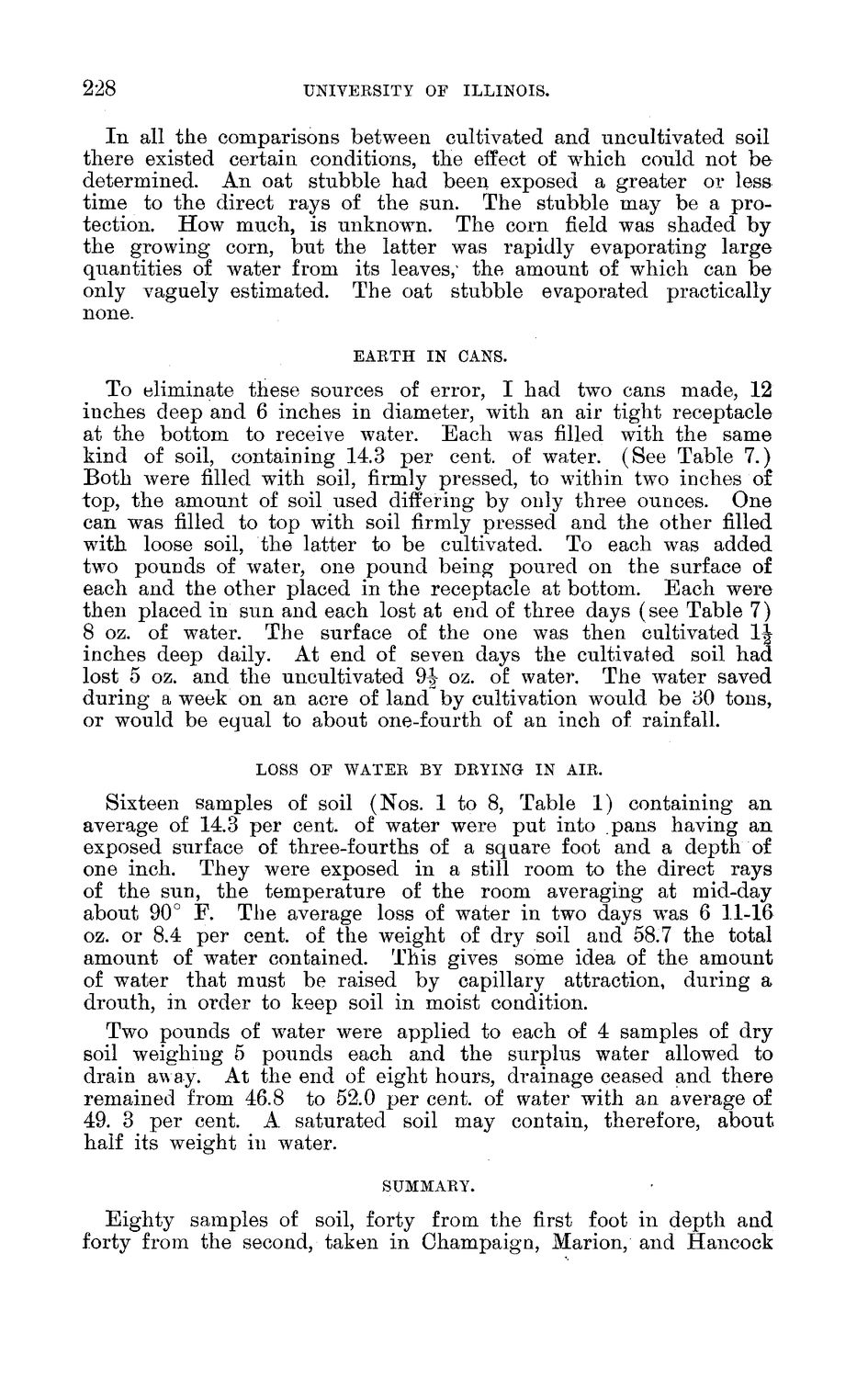| |
| |
Caption: Board of Trustees Minutes - 1888
This is a reduced-resolution page image for fast online browsing.

EXTRACTED TEXT FROM PAGE:
228 UNIVEESITY OF ILLINOIS. I n all the comparisons between cultivated and uncultivated soil there existed certain conditions, the effect of which could not be determined. An oat stubble had been exposed a greater or less time to the direct rays of the sun. The stubble may be a protection. How much, is unknown. The corn field was shaded by the growing corn, but the latter was rapidly evaporating large quantities of water from its leaves/ the amount of which can be only vaguely estimated. The oat stubble evaporated practically none. EAETH IN CANS. To eliminate these sources of error, I had two cans made, 12 inches deep and 6 inches in diameter, with an air tight receptacle at the bottom to receive water. Each was rilled with the same kind of soil, containing 143 per cent, of water. (See Table 7.) Both were filled with soil, firmly pressed, to within two inches of top, the amount of soil used differing by only three ounces. One can was filled to top with soil firmly pressed and the other filled with loose soil, the latter to be cultivated. To each was added two pounds of water, one pound being poured on the surface of each and the other placed in the receptacle at bottom. Each were then placed in sun and each lost at end of three days (see Table 7) 8 oz. of water. The surface of the one was then cultivated 1^ inches deep daily. At end of seven days the cultivated soil had lost 5 oz. and the uncultivated 9J oz. of water. The water saved during a week on an acre of land by cultivation would be 30 tons, or would be equal to about one-fourth of an inch of rainfall. LOSS OF WATEE BY DEYING IN AIE. Sixteen samples of soil (Nos. 1 to 8, Table 1) containing an average of 14.3 per cent, of water were put into pans having an exposed surface of three-fourths of a square foot and a depth of one inch. They were exposed in a still room to the direct rays of the sun, the temperature of the room averaging at mid-day about 90° F. The average loss of water in two days was 6 11-16 oz. or 8.4 per cent, of the weight of dry soil and 58.7 the total amount of water contained. This gives some idea of the amount of water that must be raised by capillary attraction, during a drouth, in order to keep soil in moist condition. Two pounds of water were applied to each of 4 samples of dry soil weighing 5 pounds each and the surplus water allowed to drain away. At the end of eight hours, drainage ceased and there remained from 46.8 to 52.0 per cent, of water with an average of 49. 3 per cent. A saturated soil may contain, therefore, about half its weight in water. SUMMAEY. Eighty samples of soil, forty from the first foot in depth and forty from the second, taken in Champaign, Marion, and Hancock
| |